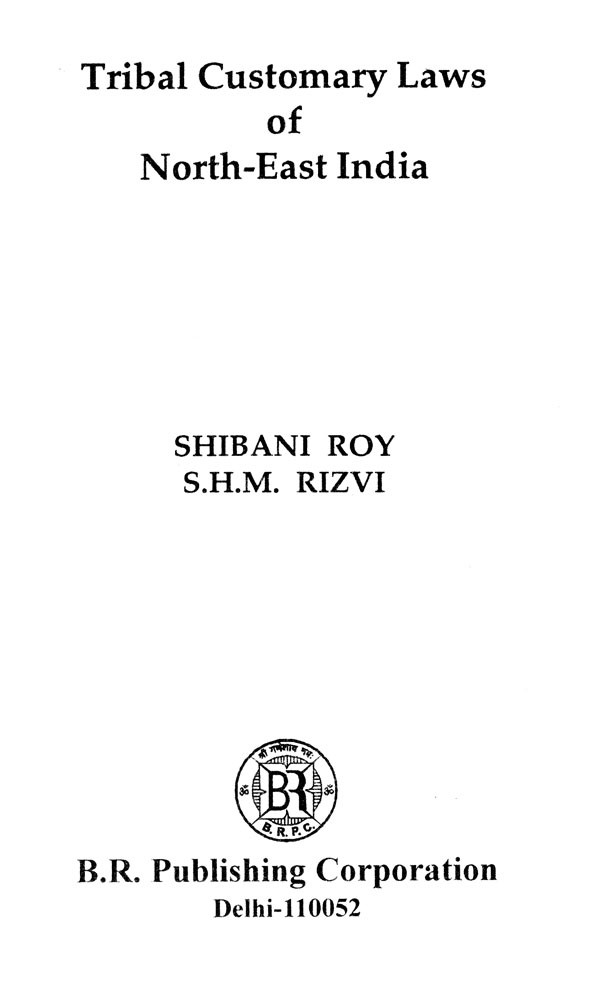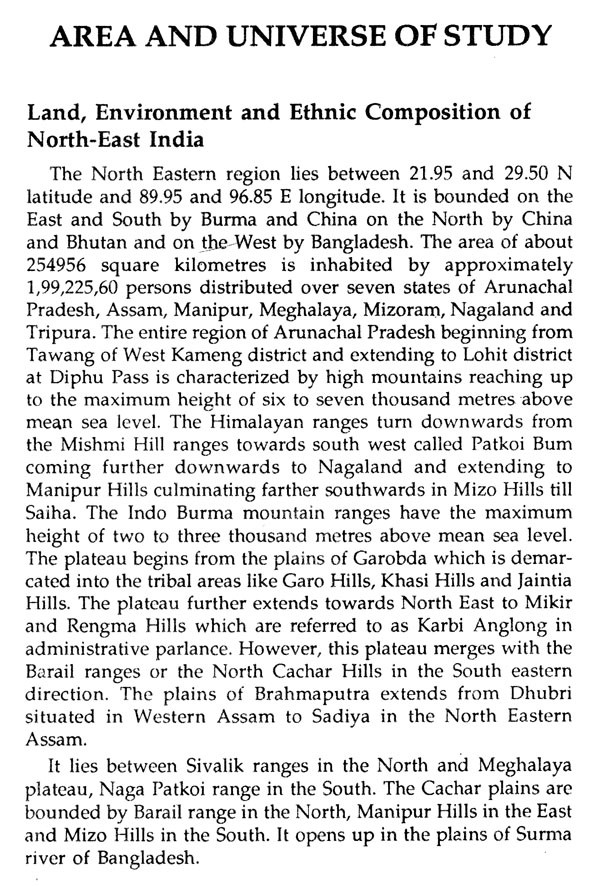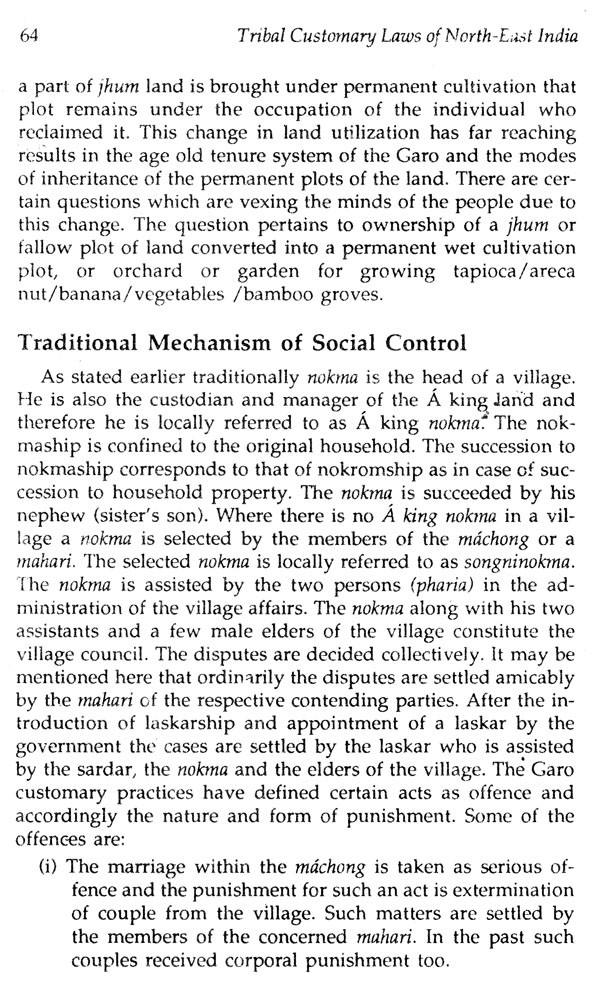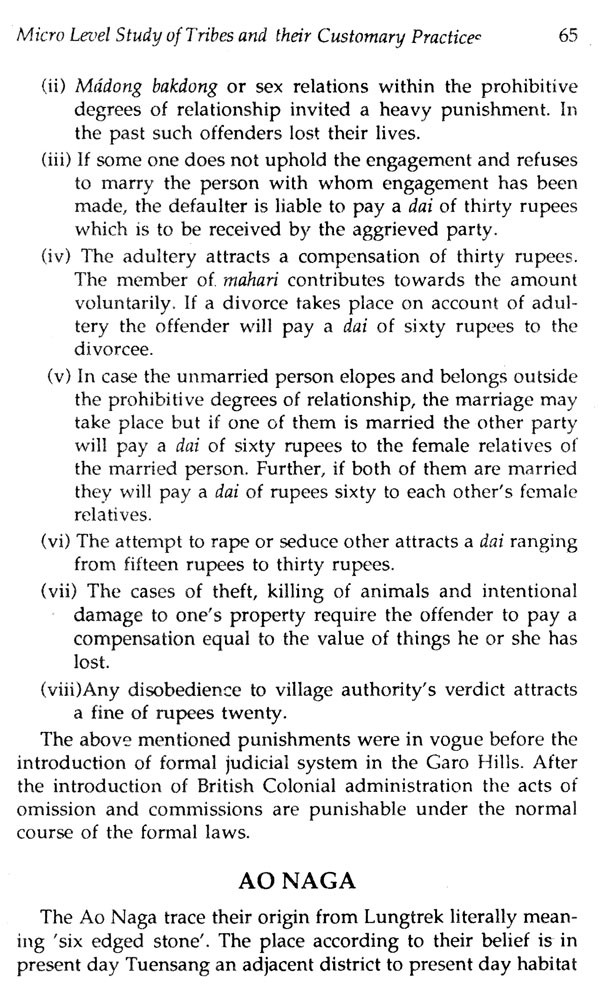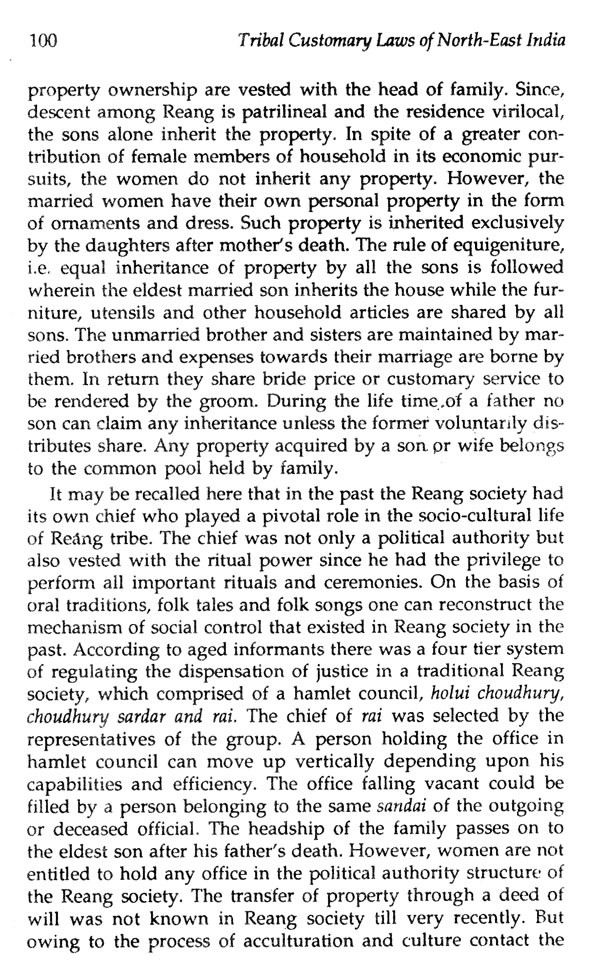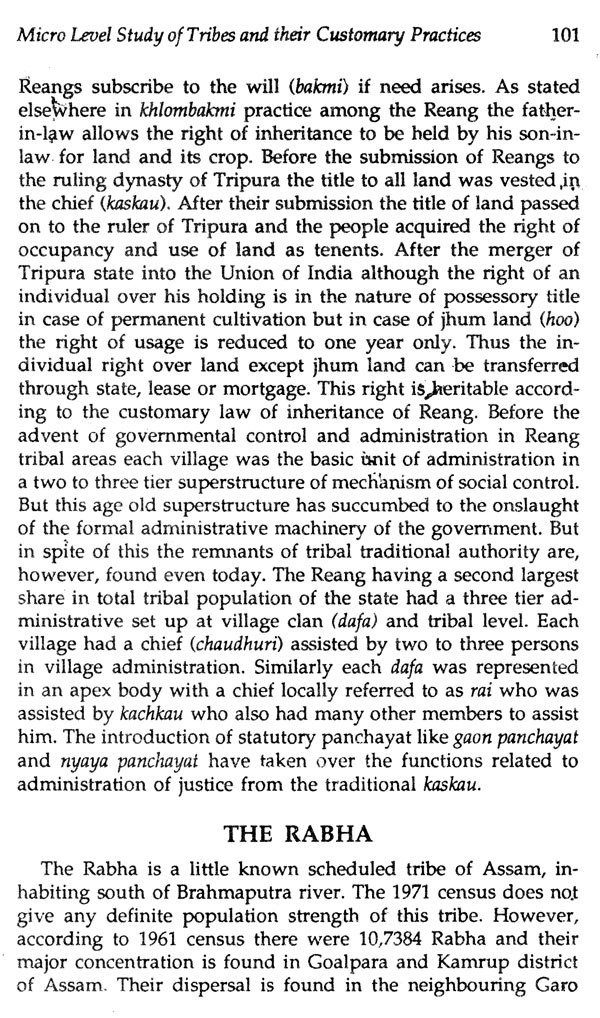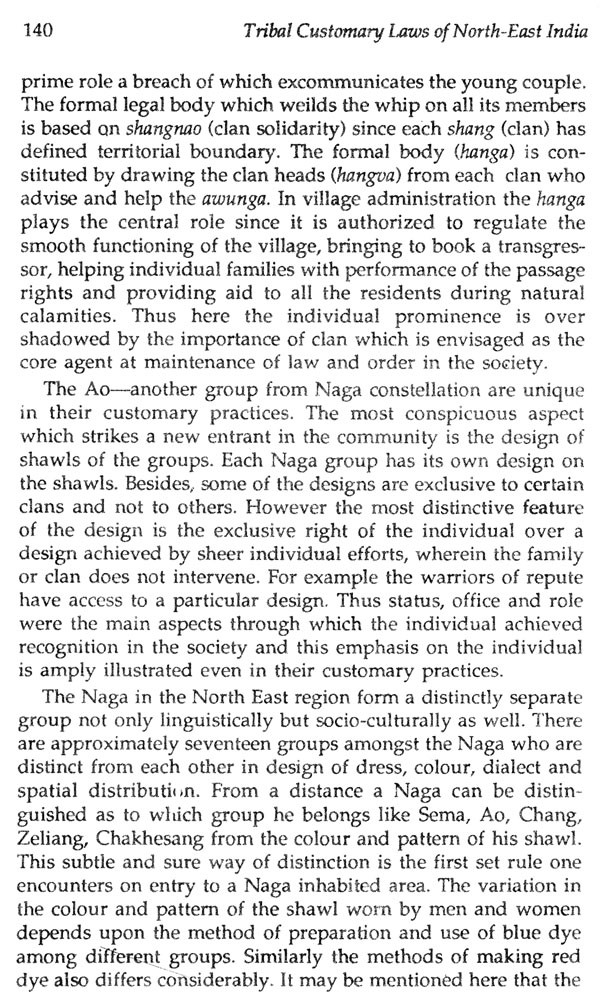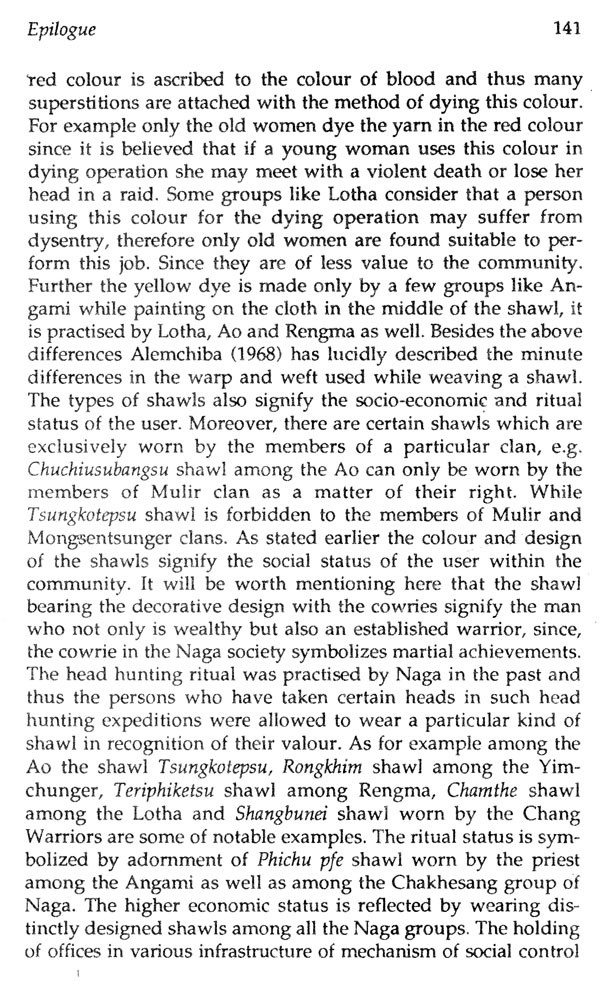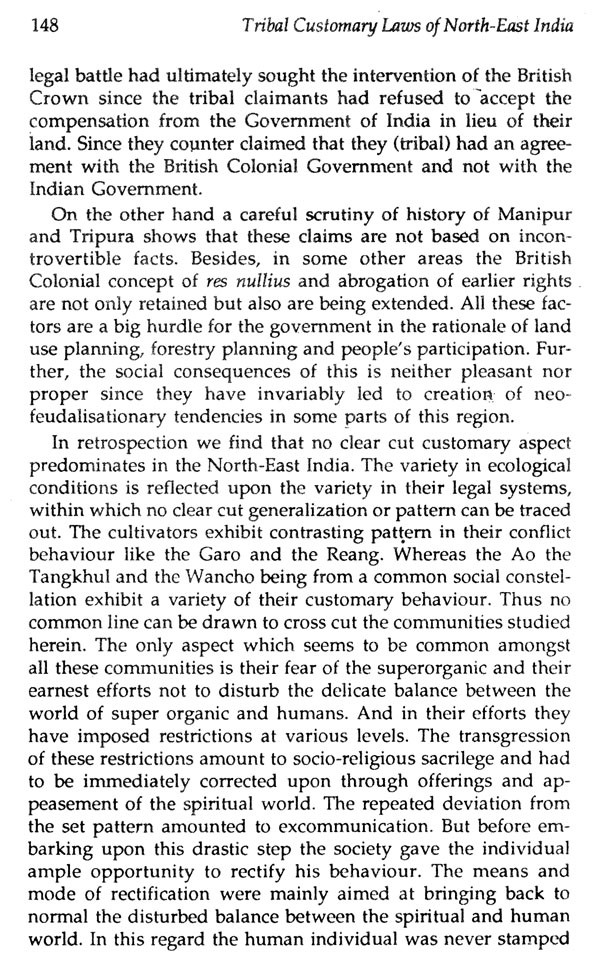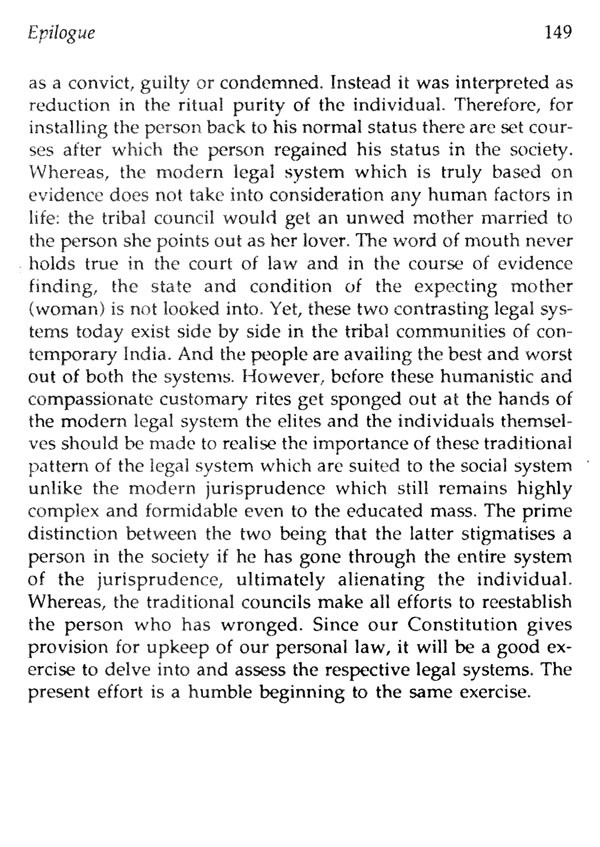
Tribal Customary Laws of North-East India
Book Specification
| Item Code: | UAS894 |
| Author: | SHIBANI ROY & S.H.M. RIZVI |
| Publisher: | 'B.R. Publishing Corporation |
| Language: | English |
| Edition: | 2013 |
| ISBN: | 9788170185864 |
| Pages: | 212 |
| Cover: | HARDCOVER |
| Other Details | 9.00 X 6.00 inch |
| Weight | 360 gm |
Book Description
The British Colonial administrators imposed their law, justice and jurisprudence on the native people little realising the importance of the indigenous customary laws. Obsession. with written records made them feel that the only nature system available was the "Dharma Sastra" which found an admirer in Warren Hastings. Even this traditional Indian law the Colonial scholars treated as inadequate, incomplete and contradictory. And hence the imposition of Anglo-Saxon jurisprudence on the native population. However, there are areas like the North East India where the Colonialists did not impose their system and let tribal customary practices administered by the village council to continue. The scarcity. of information regarding practices and sanctions of the tribal societies of North East India has been keenly felt by academic and administrative circles for it shackled the developmental activities throwing up new problems like tribal rights on land and forest. The earlier attempt of ethnographers to study the customary laws were flawed by their traditional 'evolutionist approach or piecemeal approach to individual questions. The present study comprising of anthropological analysis of data from seven major tribes living in seven states of North-East India is a beginning in the attempt to understand the tribal customary laws adopting a holistic approach since the entire matrix of these tribal societies orbits around the oral traditions.
Dr. Shibani Roy, Ph. D. (Delhi University) is actively engaged in field base empirical research among the Muslims of Northern and Western India besides doing field work-oriented research on tribes of Western and North-eastern India.
Dr. S.H.M. Rizvi, Ph. D. (Delhi University) has been engaged in bio-anthropological researches since 1986. His involvement in various research projects enabled him to conduct field work in the remotest areas of Western and North-Eastern India and study various tribes and communities living in the arid zone of Barmer districts of Rajasthan to human groups living in hilly inhospitable forests of Manipur bordering Burma.
A well-known poet. Dr. Sudha Verma began to contribute poems from her student days in 1957. Her early poems were published in Darbhanga Samachara. Jyotsana and other leading Hindi magazines of the day. Her anthology of poems entitled "Tina Dashakon Ki Antaryatra" containing a collection of 85 poems written over three decades appeared posthumously in 1990 with a foreword by Kedar Nath Singh.
For the preparation of the Tulasidasa A Bibliography the author worked as Honorary Fellow, Centre for South Asian Studies, Cornell University, Ithaca, New York (U.S.A.) in 1982.
Beginning her career as lecturer in Hindi Department in T.N.B. College. Bhagalpur in 1961, she rose to the status of Reader in the Magadh University where she taught Hindi for two decades in Gautama Buddha Mahila College, Gaya.
We are passing through the age of specialisation where the tendency and inclination is towards a prolific growth of sub disciplines under the general rubric of Anthropology. This phase set in sometimes after the Second World War and has been continuing unabated since then. Further, a discipline like Anthropology which blends various other disciplines, has all the required ingredients of an ideal breeding ground for specialisation. However, overemphasis on one aspect of any human institution or an attempt to individualise it invariably resulted in the subject matter loosening its grip on other equally important aspects of human existence, thereby taking the subject matter away from Anthropology. One such specialized area is Anthropology of law. It has been dealt by intellectuals, philosophers and judiciary of different areas and times, who have incorporated the best of what they possessed. Consequently this field has assumed the shape of a full spectrum of colours in the amassing of facts. Since no two areas or groups of people have exactly the same pattern of response to aggression or conflict situation, depending upon the age, area and people it has been dealt with in a variety of ways under different headings; some of which are customary practices, customary law, social sanction, social control, law and order, political organization, moral code and ethics, legal code, divisiveness, social conflict and conflict resolution. In other words, man has built adequate means to combat differences which arise amidst groups or individuals with respect to power, authority, land, succession, acquisition of mate and religious contrariety.
**Contents and Sample Pages**
